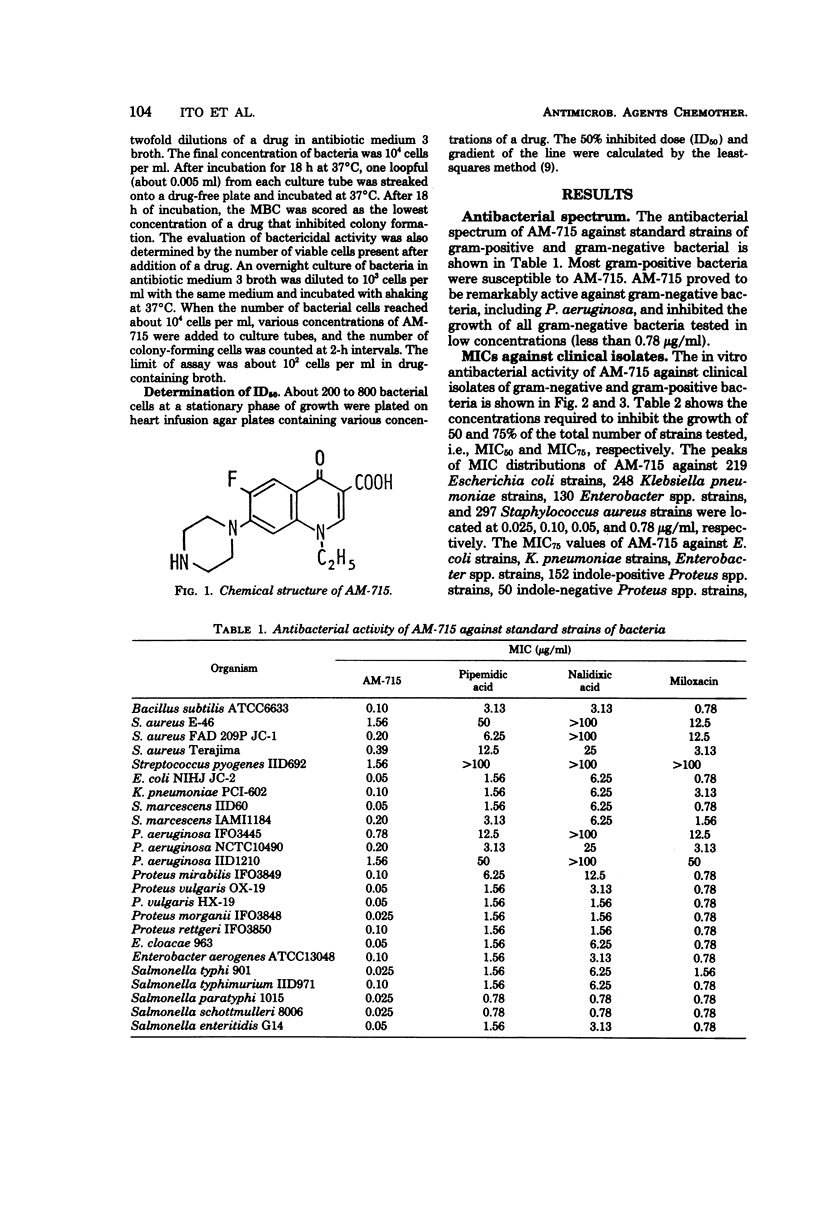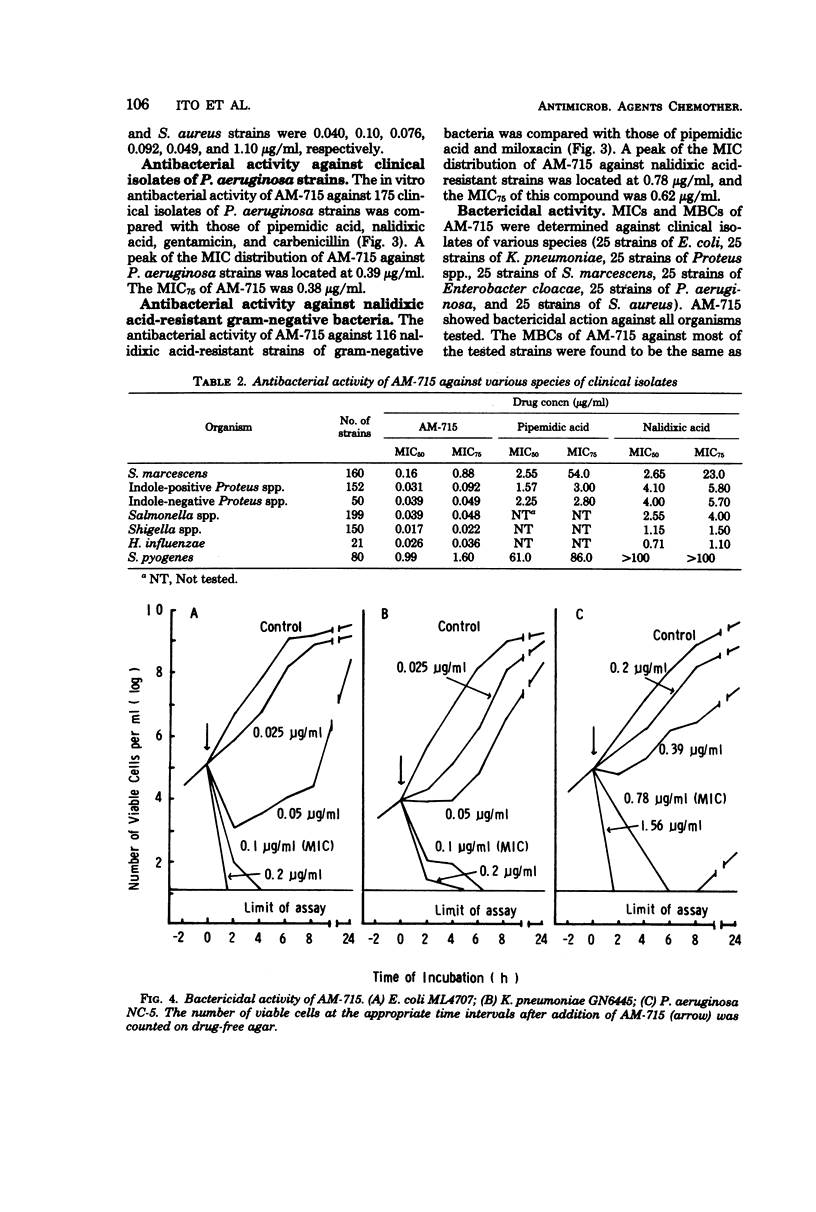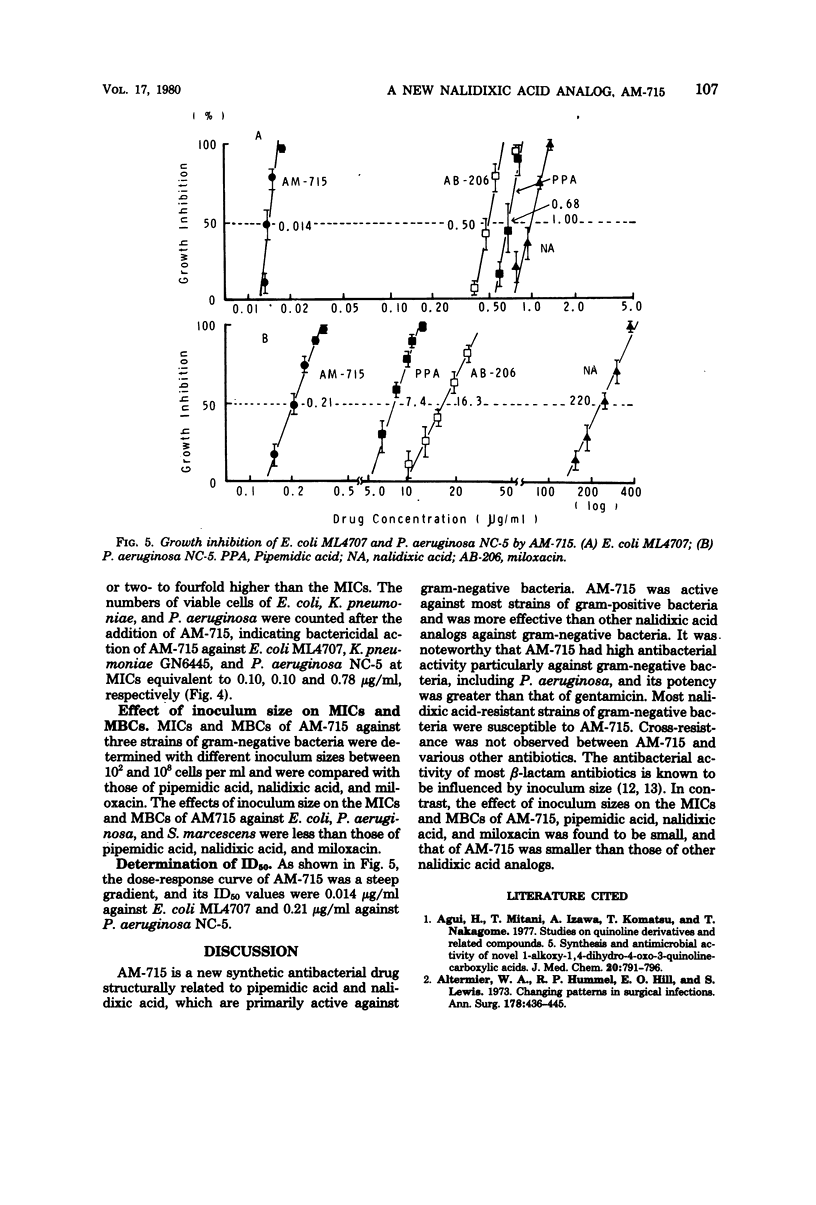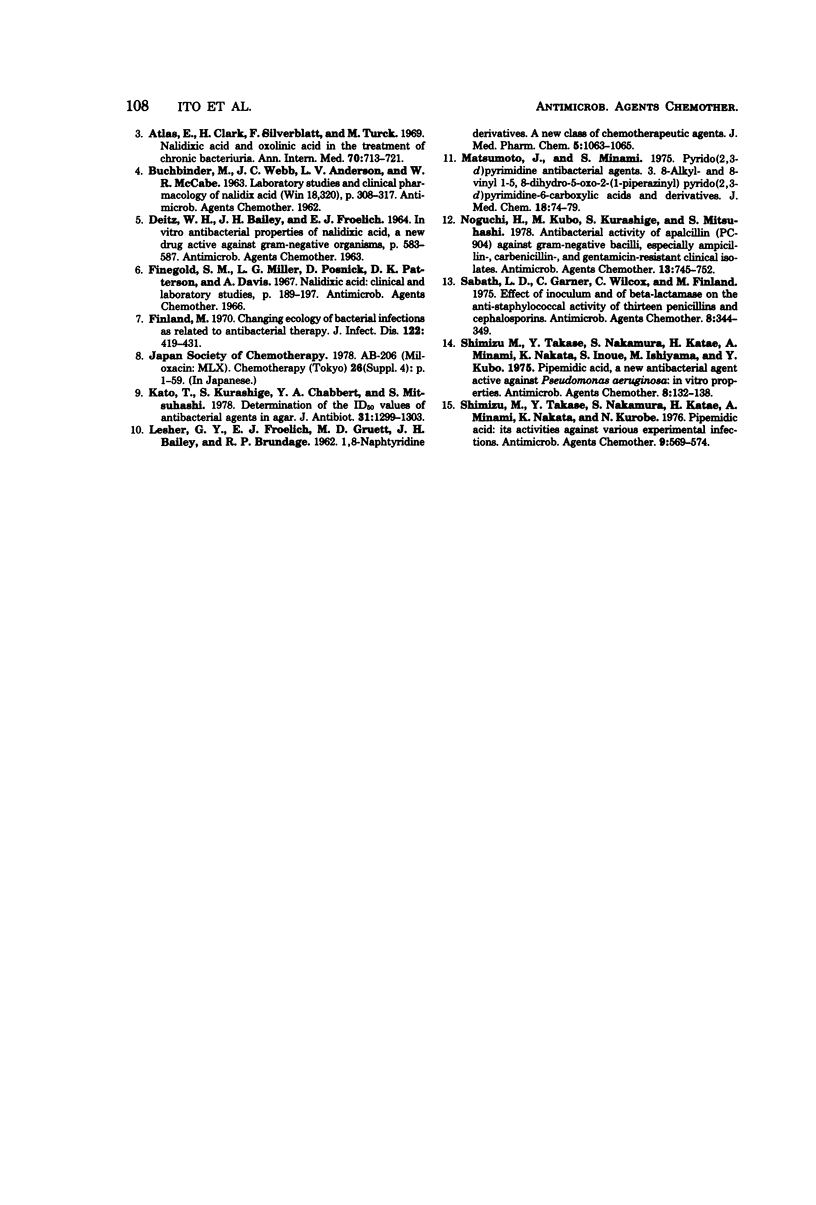Abstract
AM-715 [1-ethyl-6-fluoro-1,4-dihydro-4-oxo-7-(1-piperazinyl)-3-quinolinecarboxylic acid] is a new nalidixic acid analog. AM-715 has a broad spectrum of antibacterial activity against gram-positive and gram-negative bacteria. The antibacterial activity of AM-715 was greater than those of pipemidic acid and nalidixic acid. AM-715 had higher antibacterial activity against Pseudomonas aeruginosa than did gentamicin. Most nalidixic acid-resistant bacteria were susceptible to AM-715, and cross-resistance was not observed between AM-715 and various antibiotics. The minimal concentration of AM-715 required to inhibit the growth of 75% of the total number of clinical isolates was as follows: Escherichia coli, 0.04 μg/ml; Klebsiella pneumoniae, 0.1 μg/ml; Serratia marcescens, 0.88 μg/ml; Enterobacter spp., 0.076 μg/ml; Staphylococcus aureus, 1.10 μg/ml; P. aeruginosa, 0.38 μg/ml; and nalidixic acid-resistant strains of gram-negative bacteria, 0.62 μg/ml. AM-715 at minimal inhibitory concentrations or at slightly higher concentrations had bactericidal activity against various species of bacteria. The effect of inoculum sizes on minimal inhibitory concentrations and minimal bactericidal concentrations of AM-715 against gram-negative bacteria was smaller than on those of pipemidic acid and nalidixic acid. The dose-response curve of AM-715 indicated a steep gradient, and the 50% inhibited doses of AM-715 were 0.014 μg/ml against E. coli ML4707 and 0.21 μg/ml against P. aeruginosa NC-5.
Full text
PDF





Selected References
These references are in PubMed. This may not be the complete list of references from this article.
- Agui H., Mitani T., Izawa A., Komatsu T., Nakagome T. Studies on quinoline derivatives and related compounds. 5. Synthesis and antimicrobial activity of novel 1-alkoxy-1,4-dihydro-4-oxo-3-quinolinecarboxylic acids. J Med Chem. 1977 Jun;20(6):791–796. doi: 10.1021/jm00216a010. [DOI] [PubMed] [Google Scholar]
- Altemeier W. A., Hummel R. P., Hill E. O., Lewis S. Changing patterns in surgical infections. Ann Surg. 1973 Oct;178(4):436–445. doi: 10.1097/00000658-197310000-00006. [DOI] [PMC free article] [PubMed] [Google Scholar]
- Atlas E., Clark H., Silverblatt F., Turck M. Nalidixic acid and oxolinic acid in the treatment of chronic bacteriuria. Ann Intern Med. 1969 Apr;70(4):713–721. doi: 10.7326/0003-4819-70-4-713. [DOI] [PubMed] [Google Scholar]
- Finland M. Changing ecology of bacterial infections as related to antibacterial therapy. J Infect Dis. 1970 Nov;122(5):419–431. doi: 10.1093/infdis/122.5.419. [DOI] [PubMed] [Google Scholar]
- Kato T., Kurashige S., Chabbert Y. A., Mitsuhashi S. Determination of the ID50 values of antibacterial agents in agar. J Antibiot (Tokyo) 1978 Dec;31(12):1299–1303. doi: 10.7164/antibiotics.31.1299. [DOI] [PubMed] [Google Scholar]
- LESHER G. Y., FROELICH E. J., GRUETT M. D., BAILEY J. H., BRUNDAGE R. P. 1,8-NAPHTHYRIDINE DERIVATIVES. A NEW CLASS OF CHEMOTHERAPEUTIC AGENTS. J Med Pharm Chem. 1962 Sep;91:1063–1065. doi: 10.1021/jm01240a021. [DOI] [PubMed] [Google Scholar]
- Matsumoto J., Minami S. Pyrido(2,3-d)pyrimidine antibacterial agents. 3. 8-Alkyl- and 8-vinyl-5,8-dihydro-5-oxo-2-(1-piperazinyl)pyrido(2,3-d)pyrimidine-6-carboxylic acids and their derivatives. J Med Chem. 1975 Jan;18(1):74–79. doi: 10.1021/jm00235a017. [DOI] [PubMed] [Google Scholar]
- Noguchi H., Kubo M., Kurashige S., Mitsuhashi S. Antibacterial activity of apalcillin (PC-904) against gram-negative bacilli, especially ampicillin-, carbenicillin-, and gentamicin-resistant clinical isolates. Antimicrob Agents Chemother. 1978 May;13(5):745–752. doi: 10.1128/aac.13.5.745. [DOI] [PMC free article] [PubMed] [Google Scholar]
- Sabath L. D., Garner C., Wilcox C., Finland M. Effect of inoculum and of beta-lactamase on the anti-staphylococcal activity of thirteen penicillins and cephalosporins. Antimicrob Agents Chemother. 1975 Sep;8(3):344–349. doi: 10.1128/aac.8.3.344. [DOI] [PMC free article] [PubMed] [Google Scholar]
- Shimizu M., Takdase Y., Nakamura S., Katae H., Minami A. Pipemidic acid: its activities against various experimental infections. Antimicrob Agents Chemother. 1976 Apr;9(4):569–574. doi: 10.1128/aac.9.4.569. [DOI] [PMC free article] [PubMed] [Google Scholar]


